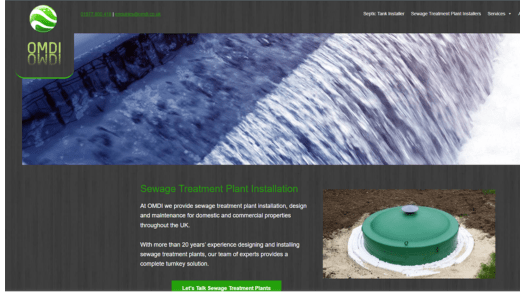Installing a Sewage Treatment Plant: Your Complete Step-by-Step Guide

As environmental sustainability and effective waste management gain prominence, installing a sewage treatment plant (STP) becomes crucial for residential, commercial, and industrial properties. A well-installed STP ensures wastewater is treated effectively before being discharged into the environment, reducing pollution and safeguarding public health. This comprehensive guide provides a step-by-step approach to installing a sewage treatment plant.
Step 1: Assess Your Needs
Evaluate Wastewater Volume and Composition: The first step is to determine the volume and type of wastewater your property generates. This involves considering factors like the number of users, peak flow rates, and any industrial effluents that may require specialized treatment.
Conduct a Site Survey: Choose a suitable location for the STP, considering accessibility for maintenance, distance from residential areas to minimize odor issues, and compliance with local zoning and environmental regulations.
Understand Regulatory Requirements: Familiarize yourself with local regulations governing sewage treatment and discharge. Secure necessary permits and approvals from relevant authorities to ensure compliance.
Step 2: Design the Sewage Treatment Plant
Select Appropriate Technology: Based on your wastewater characteristics, select the appropriate treatment technology. Common options include activated sludge processes, trickling filters, sequencing batch reactors, and membrane bioreactors. Each technology has its strengths and limitations, so choose one that fits your needs and budget.
Size the Plant Properly: Ensure the STP is adequately sized to handle peak flow rates and potential future expansions. An undersized plant may fail to treat wastewater effectively, while an oversized plant can lead to unnecessary operational costs.
Incorporate Pre-Treatment Systems: Depending on the composition of your wastewater, pre-treatment systems like screens, grit chambers, and oil-water separators may be necessary to remove large particles and grease before biological treatment.
Step 3: Plan the Installation Process
Excavation and Foundation Work: Prepare the site by excavating and laying the foundation for the STP. Proper leveling and stabilization are crucial to prevent structural issues.
Install Equipment: Follow the manufacturer’s guidelines and best practices to install tanks, aerators, pumps, and control systems. Ensure all components are installed correctly to function effectively.
Connect Inlet and Outlet Pipelines: Connect the STP to the wastewater source and discharge point. Ensure leak-proof connections and proper alignment to facilitate smooth flow of wastewater.
Set Up Electrical and Control Systems: Install electrical systems and control panels to monitor and regulate STP operations. Automation and remote monitoring systems can enhance operational efficiency and reduce manual intervention.
Step 4: Commissioning and Testing
Conduct Thorough Testing: After installation, conduct thorough testing of all components to ensure they operate as intended. Calibrate sensors and control systems to ensure the treated effluent meets regulatory standards.
Train Operational Staff: Train your operational staff on the proper use and maintenance of the STP. Regular monitoring, cleaning, and maintenance are crucial to prevent breakdowns and ensure consistent performance.
Step 5: Ongoing Maintenance
Develop a Maintenance Schedule: Create a maintenance schedule that includes regular inspections, cleaning of tanks and filters, checking for wear and tear, and replacing worn-out parts. Preventive maintenance helps extend the lifespan of the STP and ensures reliable operation.
Monitor Performance: Continuously monitor the performance of the STP. Regularly test the treated effluent to ensure it meets environmental standards and adjust operations as necessary.
Conclusion
Installing a sewage treatment plant is a significant investment in environmental stewardship and public health. By following this complete step-by-step guide, you can ensure a successful installation that meets regulatory requirements and operates efficiently. Proper planning, design, installation, and maintenance of an STP provide long-term benefits, protecting the environment and promoting sustainable wastewater management. For more information, visit OMDI
